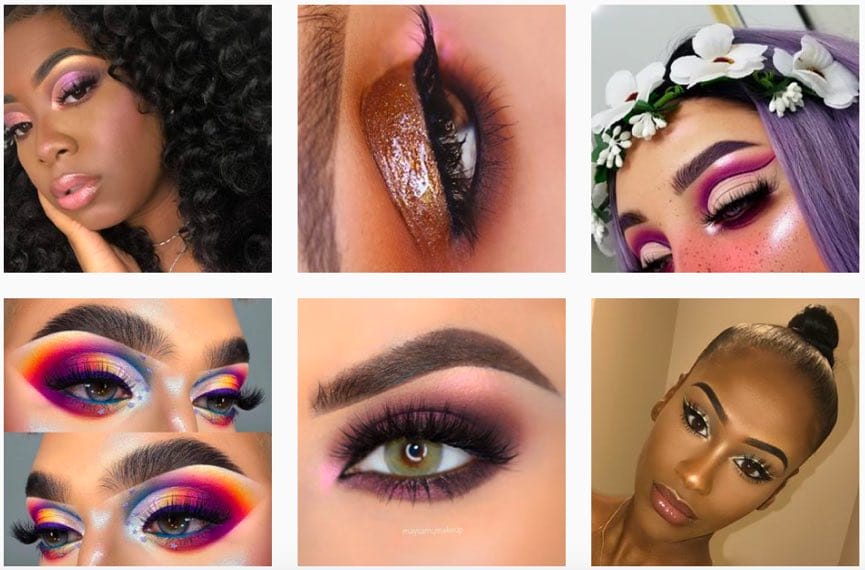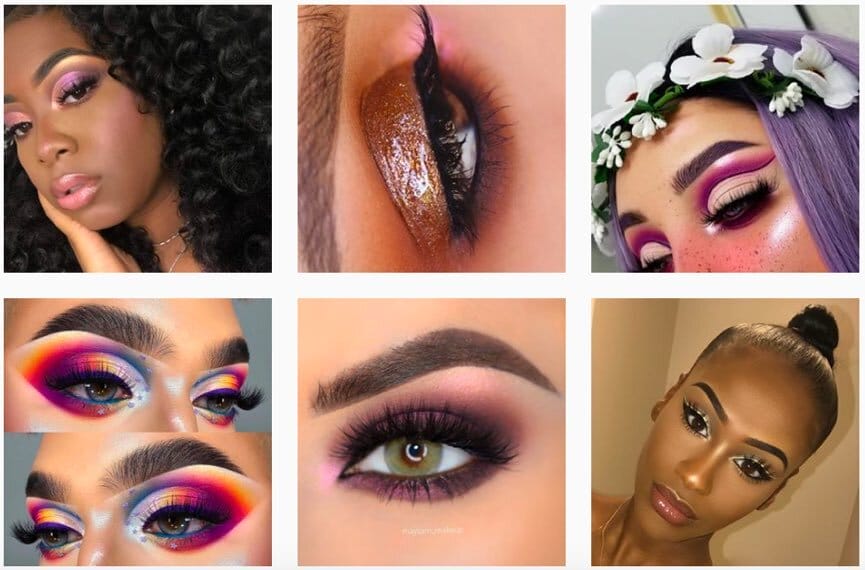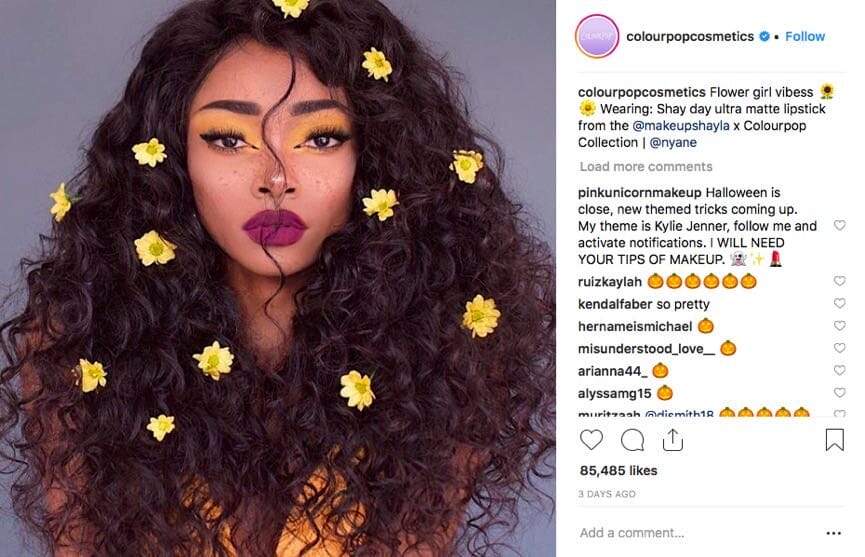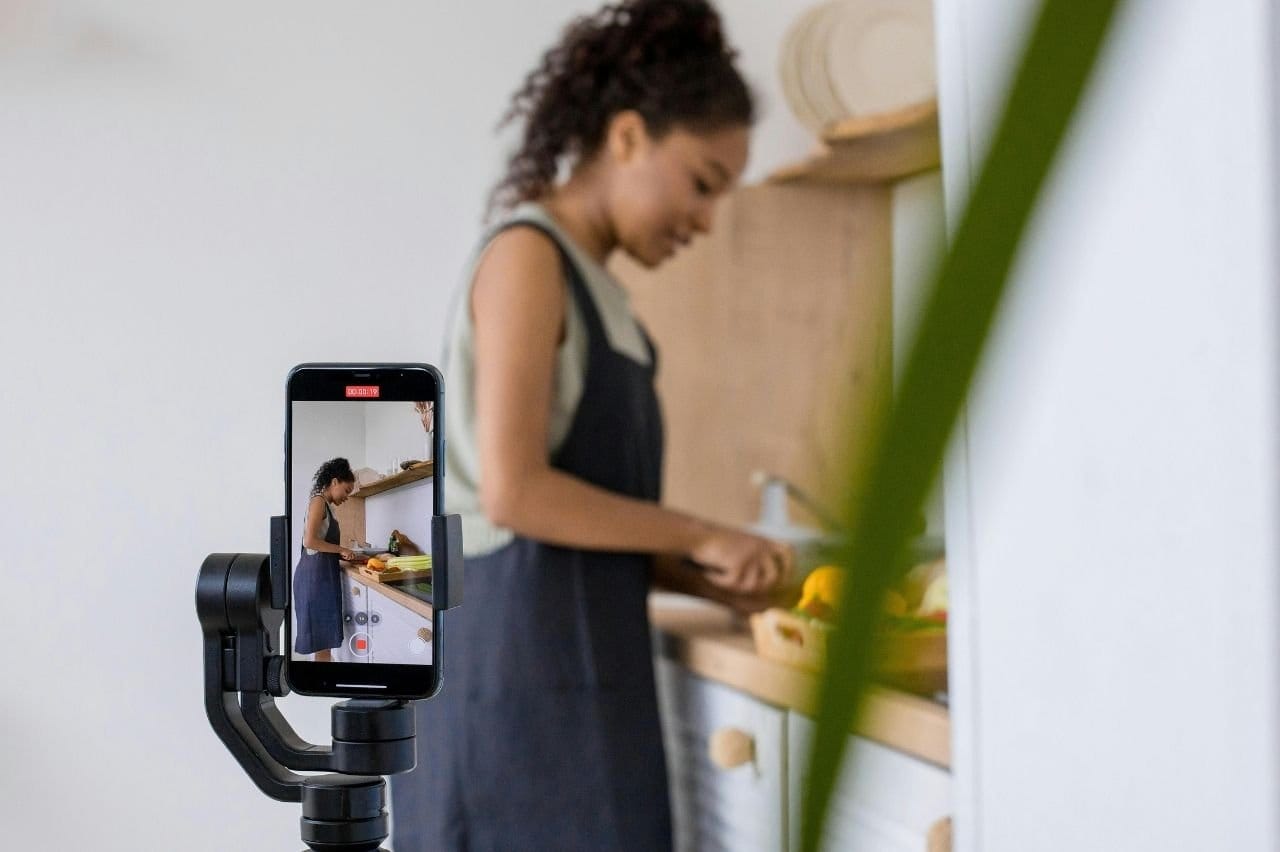Influencer Marketing For Beauty Brands: The Complete Guide

Leverage the power of a story in the beauty space with this complete guide on how to effectively and efficiently identify, reach out to, engage with, and report on influencers for beauty brands.
Using influencer marketing is one of the best ways to digitally tell a beauty brand’s story with a powerful medium: people. A few influencer posts on social media sites and blogs can easily convey the story of a beauty brand’s products on different faces and skin types, and through different lifestyles and experiences.
Why Influencer Marketing for Beauty Brands Matters
Influencer marketing can be traced back to the 1920s when Coca-Cola “employed” Santa Claus to drink their product in photos and ads they circulated. Their campaign used Santa Claus’ positive influence and values to connect to their audience in a way that hadn’t been done before.
The success Coca-Cola found with Santa Claus made many brands realize the power of people in marketing. This ushered in the age of celebrity endorsements and friendly characters in ads and on boxes—Frosted Flake’s Tony the Tiger, athlete faces on Wheaties’ boxes, celebrities in Pepsi commercials, etc. When people can put a face to a brand, brands are trusted.
The Birth Of Influencer Marketing
Until the birth of social media, there wasn’t a cost effective way for non-celebrities to tell their “friends” en masse about a new lipstick or beauty product they love. Influencer marketing for lay people was all word of mouth recommendations at dinner parties and soccer games. Fast forward to modern day influencer marketing, and you can’t scroll through Instagram without seeing a branded makeup tutorial from your friend from high school, or a celebrity you follow.
The industry that took hold of this phenomenon more quickly and cost effectively than the rest, was beauty. Modern day influencer marketing was built with beauty brands sending their products to YouTube stars for mentions, reviews and shoutouts. According to a report from Socialbakers, “data shows that 2/3 of all content from the 100 biggest beauty brands on Instagram mention another user—half of all content from fashion brands, respectively.”
Anastasia Beverly Hills and ColourPop are two independent, modern-day brands that wouldn’t exist at their current status without influencer marketing. They choose to not utilize traditional marketing at all, and it paid off. These brands have surpassed mainstream beauty brands in followers by millions. Anastasia Beverly Hills has more than 17.9 million followers on Instagram alone, compared to CoverGirl at 1.8 million.
Influencer marketing for beauty meets people on their couches. Someone could see a trusted influencer’s smokey eye tutorial post featuring a new eyeshadow palette that includes a direct link to a web page for them to purchase that palette. It is a well-rounded, human approach to product marketing that produces conversions quickly and simply.
Strategy & Approach
The only way to keep up with beauty brands that have reached the level of Anastasia Beverly Hills and the like, is to set your brand up for influencer marketing success before you even begin.
You have to decide up front what the key goals for your influencer marketing campaign are going to be, and then you have to follow-through—measuring and adjusting your efforts as needed to reach your goals. For example, if your goal is to get the most influencer mentions possible and rack up quantity, you can’t call a campaign a failure if you don’t see a lot of high quality content being produced.
Based on previous work that Firebelly has done with beauty brands, we recommend focusing on fewer, high-quality, long-term influencer relationships that are conversion heavy. This approach only works if your goal is sales-driven. If you just want brand exposure, you might want to readjust your strategy to securing more, medium-quality, micro-influencers.
Continuing the topic of goal setting, brands need to identify two audiences before they start an influencer campaign: the audience their brand currently attracts and the audience they want to attract. These audiences could be one and the same, but they need to be established ahead of time to ensure influencers are identified that have the same audiences a brand is trying to reach.
Influencer Identification
Once the audience is set, it’s time to start identifying influencers you want to work with. By utilizing various identification tools (see best practices below), you can efficiently create a list of people you want to collaborate with. It is best to filter this list for influencers by location, compatibility with your brand, previous work quality, audience size, and the type of audience the influencer reaches.
Influencer Outreach
When identification is complete, it’s time to write your initial outreach copy. This copy should accomplish three main things: showing the influencer you have an understanding of them and their work, making your brand and your goals for collaborating with them clear, and giving them next steps for working with you. Send the created copy via email, social media direct message or through an influencer’s contact page, then track the relationship as you go.
The more details you can keep track of during the influencer marketing process, the better. Whether you are using an end-to-end influencer marketing tool or a few spreadsheets, make sure you keep track of every step in the influencer relationship journey, including:
• Identified potential influencers
• Influencers you have reached out to
• Who has responded
• Who has taken next steps and what those next steps are
• When you’ve set deadlines for work completion with each influencer
• Who has met or not met those deadlines
• When/how each influencer is compensated for their work
• Personal milestones or relational tidbits you pick up about the influencers along the way
Nurturing Influencer Relationships
Keeping track of your influencer relationships is how you can best manage and maintain relationships that create trust between the brand and the influencer. This trust is the key to keeping long-standing relationships that can quickly turn an influencer into a brand advocate, if you play your cards right.
Send influencers notes or emails of encouragement with a mention of something personal you know about them, repost their content on your brand’s social media channels, and simply show them love. The more engagement and points of contact you can have with an influencer, the better the relationship, and the more willing they will be to keep working with your brand.
Best Practices
When you are deciding on where you want to find influencers to feature your beauty brand’s products, stick with the most utilized social media beauty channels: Instagram, YouTube and blogs.
These channels are where the majority of beauty influencers live and where most beauty consumers look for recommendations. Instagram is great for product shots and quick video snippets of swatches. Youtube is great for makeup and beauty tool tutorials. And blogs are great for long-form product reviews and SEO-heavy web content.
Influencer Marketing Tools
As far as choosing what influencer marketing tools you want to use, this depends on your brand’s budget and the social media channels you want to target.
For example, if you want a lot of beauty bloggers as influencers, GroupHigh is a great tool for identifying and tracking bloggers in the beauty space. This tool is blogger-centric, so it would be harder to use if Instagram is your channel of interest.
This list of influencer marketing tools from SocialMediaToday is a great start for deciding which tools work best for your brand.
Influencer Compensation
One big influencer marketing best practices topic that many brands want to know about is compensation. It is sometimes hard to know what to compensate an influencer in the beauty space. At Firebelly, we approach our influencer marketing strategy from budget down.
We recommend to start with your brand’s overall influencer marketing budget, divided by how many influencers or posts you want in that budget year, and then create a sliding scale based on an influencer’s total follower reach/value. Once you have a handle on those numbers, you can figure out how many influencers you want to just send products to, and how many influencers you want to compensate with money.
Deciding compensation goes back to a beauty brand’s overall goals. It is a lot easier to maintain and compensate fewer, high-quality influencers with money/products than it is to send hundreds or thousands of products to micro-influencers and hope they post something that’s high quality content about your brand. Many brands just choose to send products to micro-influencers and hope for the best, so they don’t have to deal with filing W-9s for influencers that they compensate over a certain dollar amount. This is big factor to consider when establishing what kind of influencer campaign you are wanting to deploy.
Having less, high-quality influencers also means you are able to better control the messaging that is being disseminated about your brand. If inaccurate information is being spread about how to use a certain beauty tool or product, it is easier to fact-check fewer influencers. On the other side of the coin, having exposure through many micro-influencers balances out the fact-checking issues to some degree, because they will follow how the majority uses the product.
Measuring Success
Once your beauty influencer marketing campaign is underway, it will be time to start measuring success. When you use a tool, such as GroupHigh, you will be able to pull links from influencers’ blogs and social media posts to report on within the tool. These types of reporting tools are good at pulling numbers such as overall engagements, impressions, sales, number of posts and clicks. But, success isn’t just about the data.
Based on your pre-set influencer campaign goals, it is critical to also assess other key factors of success when you are reporting. These factors could include: Ease of relationship with an influencer, timeliness in an influencer’s communication and work, quality of influencer’s work and care for detail, and the ability for the influencer to meet or exceed a brand’s post requirements.
Summary & What to Do Next
Utilize the power of word-of-mouth recommendations digitally with influencer marketing. Telling your brand’s story via social media with the help of influencers can be a real game-changer for your beauty brand.
Influencer marketing has a tried and true history of success, especially with beauty brands. The key is to employ the right identification, outreach, engagement and reporting. Follow our recommended best practices and measure success based on your brand’s goals.
Beauty brands can thrive with the help of a good influencer marketing campaign, but influencer marketing is a layered, and sometimes difficult, approach. It is important to have a dedicated influencer marketing person for your brand and/or an agency partner to achieve the best results.





